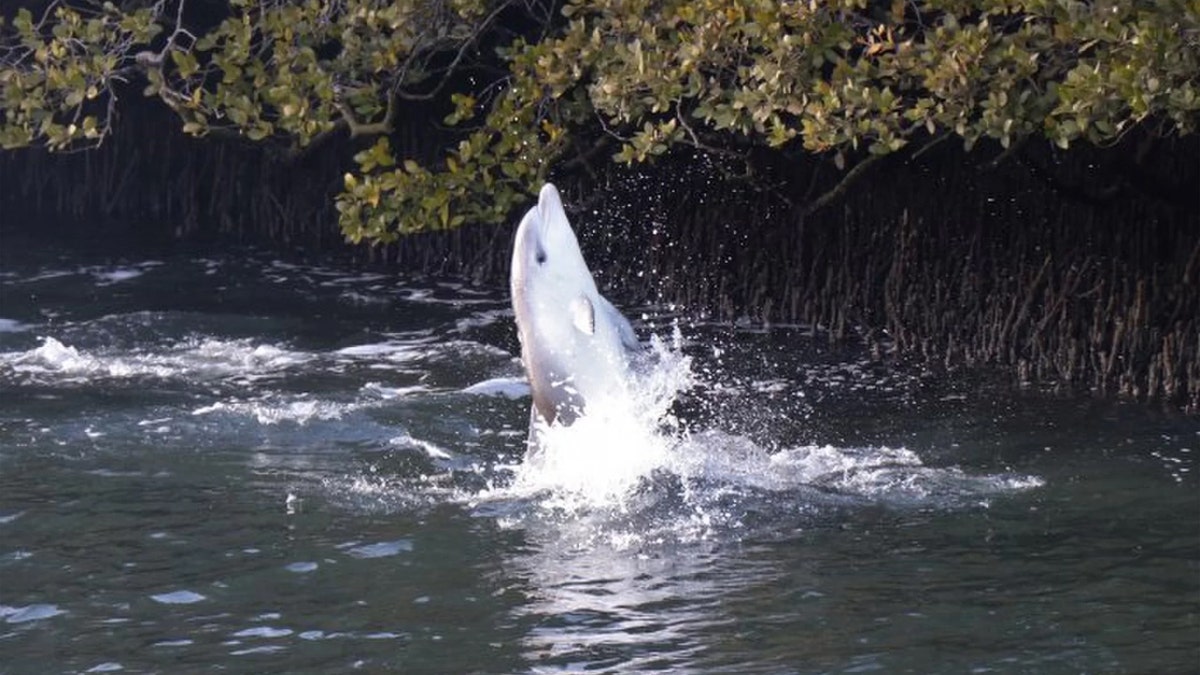
Credit: Copyright Whale and Dolphin Conservation (WDC)
A pod of wild dolphins living Down Under can literally walk on water, thanks to some instruction from "Billie," a wild dolphin who learned the trick while she was briefly held in captivity, a new study finds.
The feat highlights how dolphins can learn incredible skills from one another in the wild, even when those skills have no known advantage for survival, the researchers said.
However, this so-called tail walking, which the mammals accomplish by vigorously pumping their tail underwater so that the rest of their body is elevated above the water, appears to be a passing fad. Now that Billie and other prominent tail-walking dolphins have died, other dolphins in the pod aren't doing the trick as much, the researchers said. [Deep Divers: A Gallery of Dolphins]
The wild tale began when Billie, an Indo-Pacific bottlenose dolphin (Tursiops aduncus), was rescued in January 1988, after becoming trapped in a polluted harbor in southern Australia. During her recovery, Billie stayed at a nearby dolphinarium for several weeks. At that time, the dolphinarium was also home to five other captive dolphins that had been trained to do various tricks, including tail walking, for public shows.
Billie never received any kind of training herself, but it appears that she observed the other dolphins perform their tail-walking act, the researchers said. In 1995, seven years after Billie was released back into the wild, researchers spotted her tail walking, just like a kid imitating their favorite star.
What happened next was even more impressive: Other wild Indo-Pacific bottlenose dolphins in Billie's pod began tail walking too, putting a fresh spin on what arguably looks like Michael Jackson's moonwalk.
In all, the researchers observed 11 bottlenose dolphins — six adult females and five juveniles (three female, two male) — in Billie's pod walk on water. And the pod had a standout star: Wave, a female dolphin who was repeatedly seen walking on water from 2007 to 2014, the researchers said.
The wild dolphins usually did their walking-on-water shows in the presence of other animals, the researchers noted. But it's not clear why the dolphins did it, especially because tail walking is a "highly energetic display" the researchers wrote in the study.
However, Billie died in August 2009, and Wave, who was last seen in September 2014, is now presumed dead. This may explain why the number of tail walkers and walking-talking episodes declined after 2011, the researchers noted.
Although tail walking now happens rarely within the pod, researchers are still surprised that it happened at all. Dolphins are known to learn specific behaviors from their social group, but usually these behaviors help with survival, including strategies that can help them forage for food.
These learned skills are sometimes, but not always, passed down from generation to generation. In this case, it appears that the skill was short-lived, the researchers said. But they emphasized that it was a unique fad, as they are "not aware of any other reports [of tail walking] in this species," the researchers said in the study.
The study was published online Sept. 5 in the journal Biology Letters.
Original article on Live Science.
